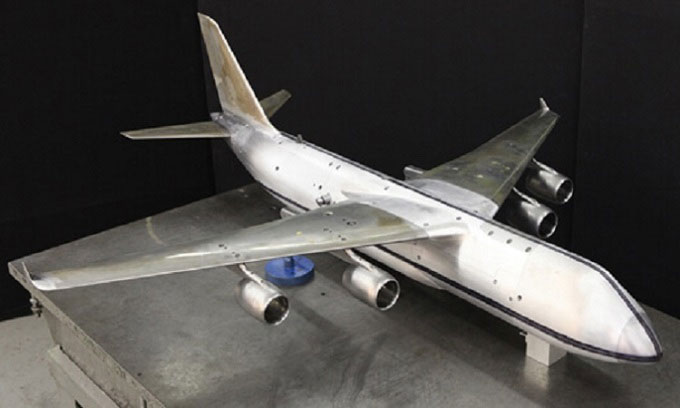The Elephant aircraft model, successor to the legendary An-124 cargo plane, can carry 180 tons of cargo with a range of 7,000 km.
Researchers at the Central Aerohydrodynamic Institute of Russia (TsAGI) are working on improving the aerodynamic design of the successor to the An-124 cargo plane, according to a press release from the agency on July 7. The new heavy transport aircraft has been nicknamed Elephant.

Model of the Elephant aircraft. (Photo: TsAGI)
The Antonov An-124 is the second-largest cargo aircraft in the world, only behind the recently destroyed An-225 in the conflict in Ukraine. Both An-225 and An-124 were designed by the same chief designer, but the An-225 uses six engines for lift, while the An-124 is equipped with four engines.
With an estimated 55 aircraft produced, the An-124 is the largest military transport aircraft currently in operation. Before 2014, Russia and Ukraine planned to jointly develop the aircraft model. However, after the cancellation of the cooperation program, TsAGI took responsibility for developing the successor to the An-124, which was first introduced in 1986.
According to TsAGI, Russia previously conducted two rounds of research to improve the aerodynamic characteristics of the An-124 at various flight speeds to identify areas for optimization. Based on the testing results, the research team adjusted the design, including a larger fuselage to allow for heavier cargo and modifications to the wing leading edge.
Another significant adjustment is the upgrade of the engine nacelle to accommodate the PD-35 jet engine. Researchers aim to create a more advanced version than the An-124, capable of carrying 180 tons of cargo compared to the current 120 tons. Additionally, the new version is expected to have a range of 7,000 km and a maximum speed of 850 km/h. Currently, the TsAGI research team is still looking for ways to enhance the design. The focus of the project is on the adjustable wing leading edge to suit various configurations.
“The Elephant aircraft is primarily optimized for civil applications,” said Alexander Krutov, a researcher at TsAGI. “With the larger fuselage, we can provide customers with a significant amount of cargo capacity within its operational range, and the adjustable wing leading edge will offer high aerodynamic quality.” The aircraft model under development is set to undergo wind tunnel testing by the end of 2022.


















































